My
List |
Addition Date
|
Target
|
Mission
|
Instrument
|
Size
|

|
2000-03-06 |
Io
|
Galileo
|
Solid-State Imaging
|
712x900x3 |

|
-
PIA02527:
-
Zal Patera, Io, in color
Full Resolution:
TIFF
(2.005 MB)
JPEG
(75.34 kB)
|

|
2000-04-19 |
Io
|
Galileo
|
Solid-State Imaging
|
799x739x3 |

|
-
PIA02533:
-
Highest Resolution of Lava Flows on Io
Full Resolution:
TIFF
(1.276 MB)
JPEG
(90.21 kB)
|

|
2000-04-19 |
Io
|
Galileo
|
Solid-State Imaging
|
769x774x3 |

|
-
PIA02534:
-
Terrain near Io's South Pole, in Color
Full Resolution:
TIFF
(1.812 MB)
JPEG
(84.44 kB)
|

|
2000-05-18 |
Io
|
Galileo
|
Solid-State Imaging
|
900x689x3 |
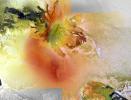
|
-
PIA02535:
-
Culann Patera, Io, in False Color
Full Resolution:
TIFF
(2.192 MB)
JPEG
(105.6 kB)
|

|
2000-05-18 |
Io
|
Galileo
|
Solid-State Imaging
|
1152x758x1 |

|
-
PIA02536:
-
1997 Lava Flows Near Pillan Patera, Io
Full Resolution:
TIFF
(366.3 kB)
JPEG
(169.6 kB)
|

|
2000-05-18 |
Io
|
Galileo
|
Solid-State Imaging
|
1152x214x1 |

|
-
PIA02537:
Lava Flows at Zamama, Io
Full Resolution:
TIFF
(75.33 kB)
JPEG
(39.4 kB)
|

|
2000-05-18 |
Io
|
Galileo
|
Solid-State Imaging
|
1152x443x1 |

|
-
PIA02538:
-
Changes Observed in Just 4.5 Months at Prometheus, Io
Full Resolution:
TIFF
(162.1 kB)
JPEG
(69.06 kB)
|

|
2000-05-18 |
Io
|
Galileo
|
Solid-State Imaging
|
1152x491x1 |

|
-
PIA02539:
-
Bright Lava Flows at Emakong Patera, Io
Full Resolution:
TIFF
(247.5 kB)
JPEG
(105.2 kB)
|

|
2000-05-18 |
Io
|
Galileo
|
Solid-State Imaging
|
381x900x1 |

|
-
PIA02540:
-
Rifting at Hi'iaka Patera, Io?
Full Resolution:
TIFF
(156.2 kB)
JPEG
(61.54 kB)
|

|
2000-05-18 |
Io
|
Galileo
|
Near Infrared Mapping Spectrometer
|
1000x1200x3 |

|
-
PIA02541:
-
Loki Patera/NIMS
Full Resolution:
TIFF
(639.3 kB)
JPEG
(78.9 kB)
|

|
2000-05-18 |
Io
|
Galileo
|
Near Infrared Mapping Spectrometer
|
1192x784x3 |

|
-
PIA02542:
-
Prometheus/NIMS
Full Resolution:
TIFF
(1.242 MB)
JPEG
(29.71 kB)
|

|
2000-05-18 |
Io
|
Galileo
|
Near Infrared Mapping Spectrometer
|
2000x2028x3 |

|
-
PIA02543:
-
Prometheus Silicates/Sulfur dioxide/NIMS
Full Resolution:
TIFF
(4.722 MB)
JPEG
(347.4 kB)
|

|
2000-05-18 |
Io
|
Galileo
|
Near Infrared Mapping Spectrometer
|
504x604x3 |

|
-
PIA02544:
-
Culann Patera/NIMS
Full Resolution:
TIFF
(478.6 kB)
JPEG
(16.82 kB)
|

|
2000-05-18 |
Io
|
Galileo
|
Solid-State Imaging
|
881x778x3 |

|
-
PIA02545:
-
Eruption at Tvashtar Catena, Io, in Color
Full Resolution:
TIFF
(1.946 MB)
JPEG
(86.57 kB)
|

|
2000-05-18 |
Io
|
Galileo
|
Photopolarimeter-Radiometer
|
710x746x3 |

|
-
PIA02546:
-
Sulfur Gas in Pele's Plume
Full Resolution:
TIFF
(544.7 kB)
JPEG
(42.15 kB)
|

|
2000-05-18 |
Io
|
Galileo
|
Photopolarimeter-Radiometer
|
1225x827x3 |

|
-
PIA02547:
-
The Role of Sulfur in Io's Volcanoes
Full Resolution:
TIFF
(1.611 MB)
JPEG
(75.39 kB)
|

|
2000-05-18 |
Io
|
Galileo
|
Near Infrared Mapping Spectrometer
|
661x556x3 |

|
-
PIA02548:
-
Temperature Map of Io's Night Side
Full Resolution:
TIFF
(924.6 kB)
JPEG
(82.66 kB)
|

|
2000-05-18 |
Io
|
Galileo
|
Near Infrared Mapping Spectrometer
|
1060x767x3 |

|
-
PIA02549:
-
Temperature Comparison at Loki
Full Resolution:
TIFF
(291.5 kB)
JPEG
(133.3 kB)
|

|
2000-05-31 |
Io
|
Galileo
|
Solid-State Imaging
|
800x800x3 |
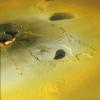
|
-
PIA02550:
-
Ongoing Volcanic Eruption at Tvashtar Catena, Io
Full Resolution:
TIFF
(2.248 MB)
JPEG
(81.64 kB)
|

|
2000-05-31 |
Io
|
Galileo
|
Solid-State Imaging
|
1152x605x1 |
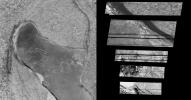
|
-
PIA02551:
-
Snapshots of Chaac: Io's Calderas Up Close
Full Resolution:
TIFF
(215.1 kB)
JPEG
(89.51 kB)
|

|
2000-05-31 |
Io
|
Galileo
|
Solid-State Imaging
|
876x900x3 |

|
-
PIA02552:
-
Stereo Image of Tvashtar Catena, Io
Full Resolution:
TIFF
(1.615 MB)
JPEG
(96.08 kB)
|

|
2000-05-31 |
Io
|
Galileo
|
Solid-State Imaging
|
506x411x3 |

|
-
PIA02553:
-
Stereo Image of Zal Patera and Neighboring Mountain, Io
Full Resolution:
TIFF
(532.5 kB)
JPEG
(23.59 kB)
|

|
2000-05-31 |
Io
|
Galileo
|
Solid-State Imaging
|
643x566x3 |

|
-
PIA02554:
-
Colorized View of Zal Region, Io
Full Resolution:
TIFF
(564.4 kB)
JPEG
(39.15 kB)
|

|
2000-05-31 |
Io
|
Galileo
|
Solid-State Imaging
|
875x900x1 |

|
-
PIA02555:
-
Shamshu Mons and Patera, Io
Full Resolution:
TIFF
(251 kB)
JPEG
(83.46 kB)
|

|
2000-05-31 |
Io
|
Galileo
|
Solid-State Imaging
|
800x600x1 |

|
-
PIA02556:
-
Highest-Resolution Picture of Io
Full Resolution:
TIFF
(471.2 kB)
JPEG
(105.6 kB)
|

|
2000-05-31 |
Io
|
Galileo
|
Solid-State Imaging
|
618x850x1 |

|
-
PIA02557:
-
Lava Flows and Ridged Plains at Prometheus, Io
Full Resolution:
TIFF
(460.9 kB)
JPEG
(76.71 kB)
|

|
2000-05-31 |
Io
|
Galileo
|
Near Infrared Mapping Spectrometer
|
890x376x3 |

|
-
PIA02558:
-
Myriad of Hot Spots on Io
Full Resolution:
TIFF
(56.56 kB)
JPEG
(27.49 kB)
|

|
2000-05-31 |
Io
|
Galileo
|
Near Infrared Mapping Spectrometer
|
850x410x1 |

|
-
PIA02559:
-
Sulphur Dioxide on the Chaac Region of Io
Full Resolution:
TIFF
(145.7 kB)
JPEG
(35.13 kB)
|

|
2000-05-31 |
Io
|
Galileo
|
Near Infrared Mapping Spectrometer
|
1130x550x3 |
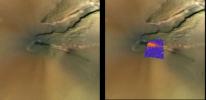
|
-
PIA02560:
-
Temperature Map of Pele, Io
Full Resolution:
TIFF
(1.376 MB)
JPEG
(57.62 kB)
|

|
2000-10-26 |
Io
|
Galileo
|
Solid-State Imaging
|
1152x899x1 |
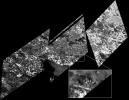
|
-
PIA02562:
-
Very High Resolution View of Io's Surface
Full Resolution:
TIFF
(292 kB)
JPEG
(137.4 kB)
|

|
2000-10-26 |
Io
|
Galileo
|
Solid-State Imaging
|
782x752x1 |

|
-
PIA02563:
-
Camaxtli Patera, An Active Volcanic Center on Io
Full Resolution:
TIFF
(638.4 kB)
JPEG
(169.6 kB)
|

|
2000-10-26 |
Io
|
Galileo
|
Solid-State Imaging
|
900x750x3 |

|
-
PIA02564:
-
Io's Prometheus Volcano at Various Resolutions
Full Resolution:
TIFF
(739.5 kB)
JPEG
(93.19 kB)
|

|
2000-10-26 |
Io
|
Galileo
|
Solid-State Imaging
|
889x766x3 |

|
-
PIA02565:
-
Sources of Volcanic Plumes Near Prometheus
Full Resolution:
TIFF
(1.988 MB)
JPEG
(98.6 kB)
|

|
2000-10-26 |
Io
|
Galileo
|
Solid-State Imaging
|
1152x483x3 |

|
-
PIA02566:
-
Io's Chain of Craters
Full Resolution:
TIFF
(1.389 MB)
JPEG
(93.06 kB)
|

|
2000-10-26 |
Io
|
Galileo
|
Solid-State Imaging
|
413x900x3 |

|
-
PIA02567:
-
Giant Lava Flow on Io, in Color
Full Resolution:
TIFF
(1.187 MB)
JPEG
(44.4 kB)
|

|
2000-10-26 |
Io
|
Galileo
|
Solid-State Imaging
|
1152x564x1 |

|
-
PIA02568:
-
Galileo Takes a Close-up Look at Prometheus
Full Resolution:
TIFF
(209.3 kB)
JPEG
(67.37 kB)
|

|
2001-02-26 |
Io
|
Galileo
|
Solid-State Imaging
|
1270x660x3 |

|
-
PIA02584:
-
Eruption at Tvashtar Catena on Io
Full Resolution:
TIFF
(1.901 MB)
JPEG
(114.5 kB)
|

|
2001-02-23 |
Io
|
Galileo
|
Solid-State Imaging
|
4000x2500x3 |

|
-
PIA02585:
-
Amirani's Big Lava Flow on Io
Full Resolution:
TIFF
(12.55 MB)
JPEG
(619.1 kB)
|

|
2001-02-23 |
Io
|
Galileo
|
Solid-State Imaging
|
3347x2531x1 |

|
-
PIA02586:
-
Tohil Mons, Io
Full Resolution:
TIFF
(5.223 MB)
JPEG
(602.5 kB)
|

|
2001-03-29 |
Io
|
Cassini-Huygens
Galileo
|
Solid-State Imaging
|
1100x900x3 |
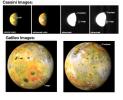
|
-
PIA02588:
-
Galileo and Cassini Image Two Giant Plumes on Io
Full Resolution:
TIFF
(1.374 MB)
JPEG
(96.56 kB)
|

|
2001-06-22 |
Io
|
Galileo
|
Photopolarimeter-Radiometer
|
1157x574x3 |

|
-
PIA02589:
-
Io's Nighttime Heat
Full Resolution:
TIFF
(1.384 MB)
JPEG
(51.07 kB)
|

|
2001-10-04 |
Io
|
Galileo
|
Near Infrared Mapping Spectrometer
|
1152x576x3 |

|
-
PIA02591:
-
Hot Spots on Io
Full Resolution:
TIFF
(806.2 kB)
JPEG
(73.93 kB)
|

|
2001-10-04 |
Io
|
Galileo
|
Solid-State Imaging
|
690x254x3 |

|
-
PIA02592:
-
Northern Plume and Plume Deposits on Io
Full Resolution:
TIFF
(297.1 kB)
JPEG
(27.59 kB)
|

|
2001-11-27 |
Io
|
Galileo
|
Near Infrared Mapping Spectrometer
|
468x620x3 |

|
-
PIA02594:
-
Io's Tvashtar Area in Infrared: Multiple Lava Flows
Full Resolution:
TIFF
(441.1 kB)
JPEG
(31.68 kB)
|

|
2001-11-27 |
Io
|
Galileo
|
Near Infrared Mapping Spectrometer
|
595x415x3 |
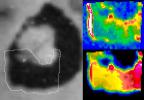
|
-
PIA02595:
-
Io's Loki in Infrared: Hot Edge
Full Resolution:
TIFF
(94.45 kB)
JPEG
(34.11 kB)
|

|
2001-11-27 |
Io
|
Galileo
|
Solid-State Imaging
|
800x623x3 |

|
-
PIA02596:
-
Io's Pele Glowing in the Dark
Full Resolution:
TIFF
(471.9 kB)
JPEG
(98.62 kB)
|

|
2001-11-27 |
Io
|
Galileo
|
Solid-State Imaging
|
798x401x1 |
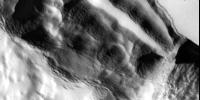
|
-
PIA02597:
-
Slumping Cliff on Io in High Resolution
Full Resolution:
TIFF
(309.9 kB)
JPEG
(41.94 kB)
|

|
2001-12-10 |
Io
|
Galileo
|
Solid-State Imaging
|
5065x3361x1 |

|
-
PIA02598:
-
Lava Channel at Io's Emakong Patera
Full Resolution:
TIFF
(12.18 MB)
JPEG
(1.129 MB)
|

|
2001-12-10 |
Io
|
Galileo
|
Solid-State Imaging
|
736x680x3 |

|
-
PIA02599:
-
Colorful Tupan Patera, Io
Full Resolution:
TIFF
(1.55 MB)
JPEG
(68.25 kB)
|

|
2002-05-28 |
Io
|
Galileo
|
Solid-State Imaging
|
1174x1024x1 |

|
-
PIA03527:
-
Detailed View of Mountain and Craters at Tohil, Io
Full Resolution:
TIFF
(227.7 kB)
JPEG
(98.12 kB)
|

|
2002-05-28 |
Io
|
Galileo
|
Solid-State Imaging
|
1280x963x1 |

|
-
PIA03528:
-
Collapsing Cliff at Telegonus Mensa, Io
Full Resolution:
TIFF
(301.6 kB)
JPEG
(105 kB)
|

|
2002-05-28 |
Io
|
Galileo
|
Solid-State Imaging
|
1280x866x1 |

|
-
PIA03529:
-
Galileo's Last View of Tvashtar, Io
Full Resolution:
TIFF
(381.9 kB)
JPEG
(149.2 kB)
|

|
2002-05-28 |
Io
|
Galileo
|
Solid-State Imaging
|
800x800x1 |

|
-
PIA03530:
-
Galileo's Best View of Loki Volcano on Io
Full Resolution:
TIFF
(477.5 kB)
JPEG
(89.71 kB)
|

|
2002-05-28 |
Io
|
Galileo
|
Solid-State Imaging
|
1280x929x1 |

|
-
PIA03531:
-
New plume vent near Zamama, Io
Full Resolution:
TIFF
(197.7 kB)
JPEG
(71.94 kB)
|

|
2002-05-28 |
Io
|
Galileo
|
Solid-State Imaging
|
1122x842x1 |
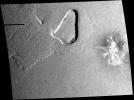
|
-
PIA03532:
-
Volcanic Depression and Shield Volcano, Io
Full Resolution:
TIFF
(885.6 kB)
JPEG
(142.7 kB)
|

|
2002-05-28 |
Io
|
Galileo
|
Near Infrared Mapping Spectrometer
|
720x480x3 |

|
-
PIA03533:
-
Amirani Lava Flow on Io
Full Resolution:
TIFF
(606.9 kB)
JPEG
(34.96 kB)
|

|
2002-05-28 |
Io
|
Galileo
|
Near Infrared Mapping Spectrometer
|
816x600x3 |

|
-
PIA03534:
-
Io in Infrared with Giant Plume's New Hot Spot
Full Resolution:
TIFF
(623.6 kB)
JPEG
(59.13 kB)
|

|
2002-05-28 |
Io
|
Galileo
|
Near Infrared Mapping Spectrometer
|
974x509x3 |

|
-
PIA03535:
-
Io in Infrared, Night and Day
Full Resolution:
TIFF
(312.2 kB)
JPEG
(36.39 kB)
|

|
2001-12-10 |
Io
|
Galileo
|
Solid-State Imaging
|
954x1035x1 |

|
-
PIA03600:
-
Tall Mountain, Tohil Mons, on Io
Full Resolution:
TIFF
(687.7 kB)
JPEG
(120.4 kB)
|

|
2001-12-10 |
Io
|
Galileo
|
Near Infrared Mapping Spectrometer
|
740x340x3 |

|
-
PIA03601:
-
Io's Tupan Caldera in Infrared
Full Resolution:
TIFF
(501.9 kB)
JPEG
(36.29 kB)
|

|
2001-12-10 |
Io
|
Galileo
|
Near Infrared Mapping Spectrometer
|
540x360x3 |

|
-
PIA03602:
-
A New Hot Spot on Northern Io
Full Resolution:
TIFF
(301.3 kB)
JPEG
(25.83 kB)
|

|
2001-12-10 |
Io
|
Galileo
|
Photopolarimeter-Radiometer
|
1655x1339x3 |
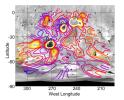
|
-
PIA03603:
-
Nighttime Temperatures on Southern Io
Full Resolution:
TIFF
(2.642 MB)
JPEG
(344.3 kB)
|

|
2002-12-06 |
Io
|
Galileo
|
Solid-State Imaging
|
1262x1043x1 |

|
-
PIA03884:
-
Recent Eruption at Gish Bar Patera on Io
Full Resolution:
TIFF
(985.7 kB)
JPEG
(145.8 kB)
|

|
2002-12-06 |
Io
|
Galileo
|
Solid-State Imaging
|
1907x2955x3 |

|
-
PIA03885:
-
Io's Culann-Tohil Region in Color
Full Resolution:
TIFF
(14.78 MB)
JPEG
(594.4 kB)
|

|
2002-12-06 |
Io
|
Galileo
|
Solid-State Imaging
|
798x561x1 |

|
-
PIA03886:
-
Mountains on Io at Sunset
Full Resolution:
TIFF
(399.8 kB)
JPEG
(51.89 kB)
|

|
2002-12-06 |
Io
|
Galileo
|
Solid-State Imaging
|
4200x3200x3 |

|
-
PIA03887:
-
Potential Source of Sulfur Flow on Io
Full Resolution:
TIFF
(22.3 MB)
JPEG
(947.9 kB)
|

|
2002-12-06 |
Io
|
Galileo
|
Solid-State Imaging
|
720x431x3 |

|
-
PIA03888:
-
Io's Gish Bar Volcanic Region in Infrared
Full Resolution:
TIFF
(140.8 kB)
JPEG
(24.83 kB)
|

|
2007-04-02 |
Io
|
Galileo
Voyager
|
Solid-State Imaging
|
11445x3643x3 |

|
-
PIA09257:
-
Io in Motion

Full Resolution:
TIFF
(125.1 MB)
JPEG
(3.431 MB)
|

|
2011-05-12 |
Io
|
Galileo
|
|
1668x1648x3 |

|
-
PIA14116:
-
Io's "Sounding Signal"

Full Resolution:
TIFF
(8.26 MB)
JPEG
(320.2 kB)
|

|
1996-01-02 |
Io
|
Galileo
|
|
3014x2422x3 |

|
-
PIA18176:
-
Galileo Over Io (Artist's Concept)
Full Resolution:
TIFF
(21.91 MB)
JPEG
(597.6 kB)
|

|
1998-03-26 |
J Rings
|
Galileo
|
Solid-State Imaging
|
1108x300x1 |

|
-
PIA00538:
The Main Ring of Jupiter (clear filter)
Full Resolution:
TIFF
(108.3 kB)
JPEG
(11.91 kB)
|

|
1998-03-26 |
J Rings
|
Galileo
|
Solid-State Imaging
|
1493x487x1 |

|
-
PIA00657:
-
Jupiter's Main Ring
Full Resolution:
TIFF
(107.1 kB)
JPEG
(21.63 kB)
|

|
1998-03-26 |
J Rings
|
Galileo
|
Solid-State Imaging
|
1152x376x3 |

|
-
PIA00658:
-
Jupiter's Ring Halo
Full Resolution:
TIFF
(52.69 kB)
JPEG
(44.59 kB)
|

|
1998-03-26 |
J Rings
|
Galileo
|
Solid-State Imaging
|
800x410x1 |

|
-
PIA00659:
-
Jupiter's Gossamer Ring
Full Resolution:
TIFF
(162.3 kB)
JPEG
(17.35 kB)
|

|
1998-03-26 |
J Rings
|
Galileo
|
Solid-State Imaging
|
1151x800x3 |

|
-
PIA00701:
-
Jupiter's Main Ring/Ring Halo
Full Resolution:
TIFF
(281.3 kB)
JPEG
(62.93 kB)
|

|
1998-09-15 |
J Rings
|
Galileo
|
Solid-State Imaging
|
2663x1418x1 |

|
-
PIA01621:
-
Jupiter's Ring System
Full Resolution:
TIFF
(145.1 kB)
JPEG
(62.26 kB)
|

|
1998-09-15 |
J Rings
|
Galileo
|
Solid-State Imaging
|
1078x636x1 |

|
-
PIA01622:
-
Jupiter's Main Ring and Halo
Full Resolution:
TIFF
(299.6 kB)
JPEG
(62.45 kB)
|

|
1998-09-15 |
J Rings
|
Galileo
|
Solid-State Imaging
|
2016x1529x3 |

|
-
PIA01623:
-
Jupiter's Gossamer Ring Structure
Full Resolution:
TIFF
(942.3 kB)
JPEG
(176.7 kB)
|

|
1998-09-15 |
J Rings
|
Galileo
|
Solid-State Imaging
|
2560x1920x3 |
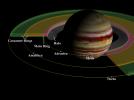
|
-
PIA01627:
-
Jupiter's Inner Satellites and Ring Components
Full Resolution:
TIFF
(2.915 MB)
JPEG
(196.2 kB)
|

|
1998-09-15 |
J Rings
|
Galileo
|
Solid-State Imaging
|
1800x2700x3 |

|
-
PIA01628:
-
Jupiter's Main and Gossamer Ring Structures
Full Resolution:
TIFF
(1.874 MB)
JPEG
(141.2 kB)
|

|
2000-09-25 |
J Rings
|
Galileo
|
Solid-State Imaging
|
4306x3306x3 |

|
-
PIA03001:
-
Jovian Ring System Mosaic
Full Resolution:
TIFF
(3.623 MB)
JPEG
(338.8 kB)
|

|
2011-03-31 |
J Rings
|
Galileo
|
Solid-State Imaging
|
715x781x1 |

|
-
PIA13893:
-
Subtle Ripples in Jupiter's Ring
Full Resolution:
TIFF
(559.2 kB)
JPEG
(66.54 kB)
|

|
1996-01-29 |
Jupiter
|
Galileo
|
Solid-State Imaging
|
1600x1250x1 |

|
-
PIA00139:
-
Comet Shoemaker-Levy 9 Fragment W Impact With Jupiter
Full Resolution:
TIFF
(93.2 kB)
JPEG
(37.14 kB)
|

|
1997-09-07 |
Jupiter
|
Galileo
|
Solid-State Imaging
|
1024x2048x3 |

|
-
PIA00296:
-
Jupiter's Great Red Spot
Full Resolution:
TIFF
(1.712 MB)
JPEG
(59.1 kB)
|

|
1997-09-07 |
Jupiter
|
Galileo
|
Solid-State Imaging
|
1400x900x1 |

|
-
PIA00488:
-
Great Red Spot Mosaic - Near-infrared Filter
Full Resolution:
TIFF
(506.6 kB)
JPEG
(76.3 kB)
|

|
1997-09-07 |
Jupiter
|
Galileo
|
Solid-State Imaging
|
2100x1200x3 |

|
-
PIA00489:
-
False Color Mosaic Great Red Spot
Full Resolution:
TIFF
(4.767 MB)
JPEG
(167.5 kB)
|

|
1997-09-07 |
Jupiter
|
Galileo
|
Solid-State Imaging
|
1546x1127x1 |

|
-
PIA00490:
-
Features of Jupiter's Great Red Spot
Full Resolution:
TIFF
(716.7 kB)
JPEG
(157.4 kB)
|

|
1998-03-26 |
Jupiter
|
Galileo
|
Near Infrared Mapping Spectrometer
|
233x506x3 |

|
-
PIA00501:
-
NIMS Spectral Maps of Jupiter's Great Red Spot
Full Resolution:
TIFF
(261.8 kB)
JPEG
(14.41 kB)
|

|
1997-09-08 |
Jupiter
|
Galileo
|
Solid-State Imaging
|
700x800x3 |

|
-
PIA00506:
-
Thunderheads on Jupiter
Full Resolution:
TIFF
(1.007 MB)
JPEG
(63.96 kB)
|

|
1997-12-18 |
Jupiter
|
Galileo
|
Solid-State Imaging
|
820x1440x3 |

|
-
PIA00522:
-
Jupiter Stratospheric Haze Comparison
Full Resolution:
TIFF
(1.985 MB)
JPEG
(77 kB)
|

|
1997-12-18 |
Jupiter
|
Galileo
|
Solid-State Imaging
|
625x685x3 |

|
-
PIA00548:
-
False Color Mosaic of Jupiter's Belt-Zone Boundary
Full Resolution:
TIFF
(1.141 MB)
JPEG
(37.28 kB)
|

|
1997-12-18 |
Jupiter
|
Galileo
|
Solid-State Imaging
|
758x1028x1 |

|
-
PIA00560:
-
Aurora Borealis on Jupiter
Full Resolution:
TIFF
(400.7 kB)
JPEG
(80.66 kB)
|

|
1997-12-18 |
Jupiter
|
Galileo
|
Solid-State Imaging
|
800x800x3 |

|
-
PIA00574:
-
"True" Color Mosaic of Jupiter's Belt-Zone Boundary
Full Resolution:
TIFF
(1.393 MB)
JPEG
(55.54 kB)
|

|
1998-03-26 |
Jupiter
|
Galileo
|
Near Infrared Mapping Spectrometer
|
1000x800x3 |

|
-
PIA00582:
-
Jupiter's Multi-level Clouds
Full Resolution:
TIFF
(415.2 kB)
JPEG
(39.65 kB)
|

|
1997-11-18 |
Jupiter
|
Galileo
|
Solid-State Imaging
|
1053x1491x3 |

|
-
PIA00600:
-
Family Portrait of Jupiter's Great Red Spot and the Galilean Satellites
Full Resolution:
TIFF
(2.21 MB)
JPEG
(112.7 kB)
|

|
1998-03-06 |
Jupiter
|
Galileo
|
Solid-State Imaging
|
1300x1000x3 |

|
-
PIA00602:
-
E4 True and False Color Hot Spot Mosaic
Full Resolution:
TIFF
(2.378 MB)
JPEG
(86.53 kB)
|

|
1997-09-23 |
Jupiter
|
Galileo
|
Solid-State Imaging
|
712x715x3 |

|
-
PIA00603:
-
False Color Aurora
Full Resolution:
TIFF
(1.705 MB)
JPEG
(98.67 kB)
|

|
1998-03-06 |
Jupiter
|
Galileo
|
Solid-State Imaging
|
1300x1200x1 |

|
-
PIA00604:
-
Jupiter Equatorial Region
Full Resolution:
TIFF
(641.1 kB)
JPEG
(102.2 kB)
|

|
1997-09-23 |
Jupiter
|
Galileo
|
Solid-State Imaging
|
614x900x1 |

|
-
PIA00605:
-
Visible Jovian Aurora
Full Resolution:
TIFF
(254.8 kB)
JPEG
(106.1 kB)
|

|
1998-03-26 |
Jupiter
|
Galileo
|
Solid-State Imaging
|
1700x1700x3 |

|
-
PIA00700:
-
Jupiter's White Ovals/True and False Color
Full Resolution:
TIFF
(4.658 MB)
JPEG
(183.5 kB)
|

 Planetary Data System
Planetary Data System


















































































































